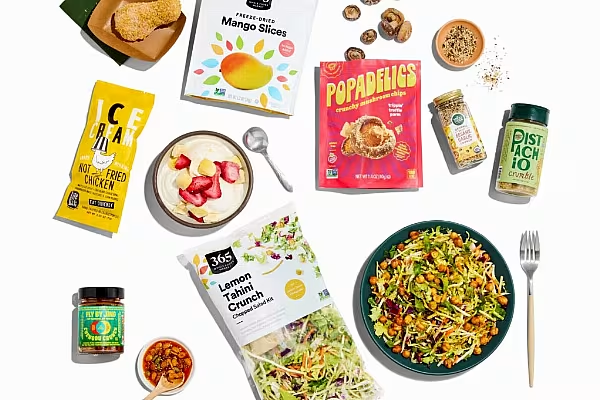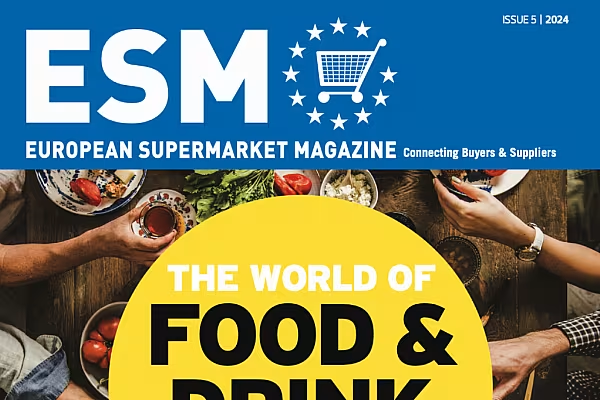The COVID-19 crisis has fundamentally altered how many retailers and consumer goods firms approach digital. This article first appeared in ESM Issue 1 2021.
While many in retail have been anticipating a ‘tipping point’ at which online shopping would see a surge in growth, few could have predicted that a global pandemic would be the catalyst.
One year on from the emergence of COVID-19, and despite some early teething problems, e-commerce is finally a major growth channel for grocers across Europe, with many retailers reporting sizeable gains in revenue generated online over the past 12 months.
But the growth of e-commerce during the pandemic owes a lot to the physical retail channel, with click-and-collect services soaring and retailers looking for new ways to engage with shoppers.
Multiple Channels
A report issued by GlobalData last September, titled Multichannel Retail and Covid-19, found that shopping habits in the US and Europe ‘shifted dramatically’ during the pandemic, however, physical retail has remained an important backbone. It tracked the shopping behaviours and purchasing habits of more than 82,500 consumers, as well as using data provided by retailers, and found that transactions made through online channels did not exceed 30% of retail sales during the peak of lockdown in any country covered by the study.
“Despite claims that the growth of online shopping is leading to a ‘retail apocalypse,’ the reality is that many retailers across all sectors are thriving because they are innovating with multichannel to provide a convenient shopping experience for consumers,” says Neil Saunders, GlobalData’s lead retail analyst.
“A very significant proportion of sales that are attributed to the online channel are, in fact, multichannel sales that rely on both stores and online for success. On average, one third of online non-food purchases – where a customer actually transacts online – are in fact reliant on physical stores for product selection, pick up, or return.”
According to the report, the data shows that the notion that shoppers choose either online or offline for their shopping needs can be dispelled – consumers shop simultaneously across channels and see them as substitutable.
At-Home Inspiration
According to research and training charity IGD, boosting online capabilities and bringing the out-of-home experience to consumers’ houses are among the key trends likely to shape global retail in the coming year.
IGD notes that, following a disruptive year, retailers are likely to continue to focus on upgrading their digital operations, particularly in areas that require low capital investment.
This is likely to mean increased partnerships with third-party tech providers, as well as an increased use of machine learning and artificial intelligence at the store level.
“The pandemic has accelerated retailers’ and shoppers’ digital awareness and capabilities,” says Toby Pickard, head of innovation and futures at IGD.
“Numerous companies have been testing and learning from new digital initiatives, and in 2021, companies will need to move beyond this to improve and implement at scale. Digital transformation will require new leadership and a fresh cultural mindset, as companies create flexible and agile ways of working.”
Allied to this, e-commerce investment is expected to accelerate, with the focus on online profitability. Retailers are expected to seek to reduce their overall operating costs to accommodate more of an online presence, improving processes and automation, while encouraging shoppers to avail of click-and-collect services and rapid delivery options.
The coming year is also likely to see retailers use the new shopping dynamic as a means to engage with customers in different ways, such as through meal kits, online cookery classes, and other, various experiential tools, particularly as many out-of-home venues remain shuttered.
“By highlighting value, ease of preparation and cooking, along with inspiration, retailers have a real opportunity to capture shopper spend that was previously taking place out of home,” says Pickard.
Scaling The Store Of The Future
As for the future of the physical retail environment? A recent report by BCG, Scaling the Store of the Future, suggests that retailers that harness effective consumer-facing technologies in the bricks-and-mortar environment have the potential to boost revenue significantly – by as much as 5% to 15% per store in just a few months.
While such investment is unlikely to materialise during the current lockdown situation (the report was published in February 2020, just prior to the first COVID wave), it does hint at a future in which integration of the online and offline worlds is going to be increasingly important if traditional retail is going to continue to thrive.
BCG’s report notes that companies are using digital technologies to improve three core aspects of the in-store retail journey: exploration, selection and checkout.
- Exploration: Digital signage, as well as augmented and virtual realities, enables shoppers to interact with products, enhancing the overall brand experience.
- Selection: Consumers can navigate a vast assortment of products through in-store technologies, rather than just the products available on site. This gives rise to ‘endless aisle’ concepts, wherein customers can browse and order items that are out of stock, or smart labels that enable grocery shoppers to access product information that can’t fit on a label.
- Checkout: Digital technologies are utilised to make the checkout experience as hassle-free as possible – in some cases, doing away with fixed registers and checkout lines altogether.
As BCG notes, the lack of a bona-fide ‘winning’ solution means that many so-called ‘stores of the future’ are decked out with the latest and greatest technologies, but with little lasting effect from this investment. A better approach, it suggests, is to start small and scale up, tweaking elements and re-evaluating the business case if necessary.
‘To scale stores of the future expeditiously and effectively, retailers often need to add a scale-up phase to the implementation process,’ the report reads. ‘This ensures the flexibility needed to make improvements after the pilot and, if necessary, pivot before rolling out an expensive solution to thousands of stores.’
Taking Action
In grocery, these types of investment are already manifold, and COVID-19 has, in many cases, accelerated adoption. Witness, for example, the current trend towards ‘unmanned’ stores, with Spar Netherlands, Monoprix and Coop Sweden among those trialling this concept.
A global study carried out by ABI Research last October found that contactless payment technology has seen a surge in use during the pandemic, having already experienced increased demand prior to the onset of COVID-19.
The ABI Research study found that 45% of consumers across nine countries (the United States, China, Japan, South Korea, the United Kingdom, Spain, France, Germany and Italy) use contactless payments, with more than two thirds of customers having two or more cards stored in their digital wallets.
The survey also reported that customer experience using contactless or NFC technology tended to be positive, with 88% of respondents reporting a ‘consistently positive user experience’. In addition, 70% were confident with the security that contactless cards and mobile wallets provide.
Separately, Global Market Insights has predicted that the self-checkout market is expected to be valued at $6 billion by 2026, with safety and hygiene concerns relating to the pandemic again proving an accelerant. It found that, as a result of COVID-19, some 87% of shoppers are now inclined towards using touchless or self-checkout options, with the majority of these (90%) falling between 18 and 60 years of age.
The Data Gambit
How retailers and consumer goods firms utilise data to influence decision-making is also likely to take on a new degree of importance as a result of COVID-19.
In a recent report on the changing approach to data management by businesses, The data gambit: How large B2B companies can outmanoeuvre start-ups, McKinsey suggests that the COVID-19 situation and the resulting adoption of digital technologies has ‘opened opportunities to develop new data-driven services and interaction models’, adding that the ‘most promising way forward may be a departure from traditional ways of doing business’.
While the report largely covers the B2B sector, some of the points raised therein are similarly valid for customer-facing industries, such as retail – notably that the embrace of digital can deliver continuous KPIs as certain projects or ventures evolve, enabling businesses to tailor their offering in real time.
‘Good ones focus on areas of crucial strategic value, such as customer satisfaction, loyalty, purchase frequency, average order size, gross margin, and revenue per customer for transaction platforms,’ the report reads. ‘In other stages of the value chain, other indicators will be more relevant, such as throughput or equipment utilisation.’
It urges businesses to ‘think of data as assets’ – akin to physical bricks-and-mortar assets – that can generate new value for a business. Building credibility and relationships takes time and trust, and can’t be easily emulated by your competitors. By adopting an entrepreneurial approach to how data is handled – as a springboard to potential future ventures, rather than just a snapshot of the marketplace, businesses can gain an advantage over slower-moving rivals.
An increasingly digitised retail future awaits!
© 2021 European Supermarket Magazine – your source for the latest retail news. Article by Stephen Wynne-Jones. Click subscribe to sign up to ESM: The European Supermarket Magazine.














